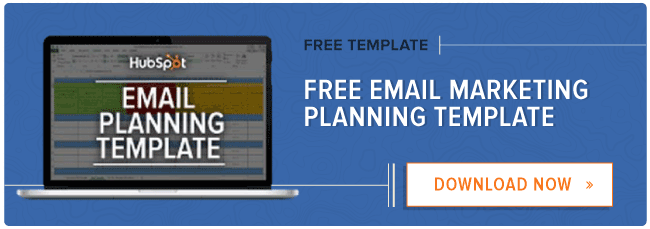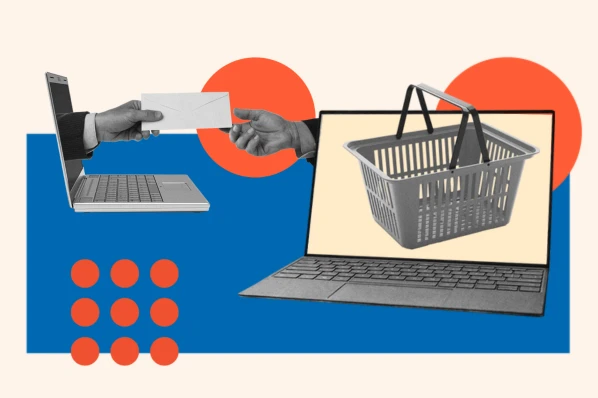Whether you're just starting out with email marketing or you already have some experience sending marketing emails, you've probably wondered about the types of email communication you can send to your database.
Should you nurture your subscribers with weekly newsletters? Are dedicated sends better at optimizing your sales and marketing funnel? What about email digests? These are all valid questions that marketing professionals should consider when selecting the right format to meet their email marketing goals.
So which types of emails should you be sending? In this blog post, we'll discuss the different types of email marketing communication and their respective advantages and disadvantages. This information should help you make both an educated decision when choosing the most appropriate email format to meet your specific goals.

When deciding whether you should use email newsletters in your marketing strategy, you first need to determine your goal. What is it that you want your email newsletter to achieve? You might want to nurture your existing contacts and become the first brand they think of when they need a product or service in your industry. Or your goal might be to increase social sharing so you attract new people to your list. As you define your goal, think about what metrics you can use to track your progress.
 Email newsletters are characterized by three key advantages . First, they can spread your brand awareness. By building habitual communication with your email subscribers, you enable them to recognize your brand and associate it with a positive sentiment. Second, email newsletters can leverage existing content. Many companies do quick summaries of their most popular blog posts and link to the articles from their newsletter. Third, email newsletters give you the freedom to include different types of content that might be important to your organization. For instance, the same newsletter can contain a popular blog post, a new offer, an announcement of an upcoming event, information about a discount, and a link to a survey.
Email newsletters are characterized by three key advantages . First, they can spread your brand awareness. By building habitual communication with your email subscribers, you enable them to recognize your brand and associate it with a positive sentiment. Second, email newsletters can leverage existing content. Many companies do quick summaries of their most popular blog posts and link to the articles from their newsletter. Third, email newsletters give you the freedom to include different types of content that might be important to your organization. For instance, the same newsletter can contain a popular blog post, a new offer, an announcement of an upcoming event, information about a discount, and a link to a survey.
Email newsletters are also characterized by some important disadvantages . First, they dilute the main call-to-action. If you include a series of blurbs or article summaries, the attention of your recipients will most likely be spread across these tidbits of information as opposed to staying focused on a certain element. Second, the design of a newsletter becomes a much more complicated task than other emails like dedicated sends. You’ll have to spend some time deciding on the right placement of images and text, alignment, and prioritization of information.


Digests are generally easier to consume than newsletters because they generally consist of links and lists. One popular option is the blog digest, which collects notifications about the articles you publish throughout a certain time frame and releases an email with the links. If you are blogging using HubSpot’s platform, your subscribers have the opportunity to set up this type of digest based on their preferences.
Dedicated emails, also known as stand-alone emails, contain information about just one offer. For instance, you can use a dedicated email to notify your target audience about a new whitepaper you've released or invite them to attend an event that you're hosting.
 Dedicated email sends have three main advantages . First, they help you set up the context to introduce a main call-to-action and really drive results in respect to that one offer. Second, they are easy to build. Once you have your email template in place, building dedicated sends should be easy. Unlike newsletters, dedicated emails don’t need to include many graphical elements to separate the different blocks of text and prioritize information. Third, they are easy to measure. When you promote one main message and call-to-action, it will be easy for you to track progress, such as click-through rate, conversion rate, and leads generated from the individual send.
Dedicated email sends have three main advantages . First, they help you set up the context to introduce a main call-to-action and really drive results in respect to that one offer. Second, they are easy to build. Once you have your email template in place, building dedicated sends should be easy. Unlike newsletters, dedicated emails don’t need to include many graphical elements to separate the different blocks of text and prioritize information. Third, they are easy to measure. When you promote one main message and call-to-action, it will be easy for you to track progress, such as click-through rate, conversion rate, and leads generated from the individual send.
Dedicated email sends also have some disadvantages . First, with dedicated sends, the emailing schedule is less clear and potentially less consistent. You might use dedicated emails when you have published a new offer (which might be sporadic). Even if you decide to maintain a specific schedule, your subscribers might not realize it or expect communication from you because there is no clear connection between the separate sends. Second, it’s tough to include diverse content in a dedicated send, so you cannot add other calls-to-action that might also be important to your organization.
Lead nurturing introduces a tightly connected series of emails full of useful content with a coherent purpose. In this context, lead nurturing offers more advantages than just an individual email blast.
 Let's look at some of the specific advantages of lead nurturing. First, it's timely. Studies show that email response rates decline over the lead age, so you need to reach out to your contacts while they are fresh and actively engaged with your brand. Second, it's automated. Once you set up lead nurturing, emails are sent out automatically according to the schedule you've set as new leads come in. This leads to a high return on a low investment. Third, it is targeted. According to HubSpot's research, lead nurturing emails generate an 8% CTR compared to general email sends, which generate just a 3% CTR. In other words, targeted and segmented emails perform better than mass email communications.
Let's look at some of the specific advantages of lead nurturing. First, it's timely. Studies show that email response rates decline over the lead age, so you need to reach out to your contacts while they are fresh and actively engaged with your brand. Second, it's automated. Once you set up lead nurturing, emails are sent out automatically according to the schedule you've set as new leads come in. This leads to a high return on a low investment. Third, it is targeted. According to HubSpot's research, lead nurturing emails generate an 8% CTR compared to general email sends, which generate just a 3% CTR. In other words, targeted and segmented emails perform better than mass email communications.
Lead nurturing also has some disadvantages that you should keep in mind. First, it results in less congruent buzz. Dedicated sends to your entire email database can generate a lot of buzz around your brand. Lead nurturing cannot quite achieve the same buzz effect because it is programmed to schedule fewer emails to segmented audiences. Second, it's inviting to passive tracking. Because lead nurturing is automated and marketers often forget about it after they’ve set it up, it also tends to be under-reported.

If you want to reach a totally new audience and generate net new leads, you might want to try sponsorship emails. In sponsorship emails, you pay for inclusion of your copy in another vendor’s newsletter or dedicated send.
 The biggest advantage of sponsorship emails is that they are highly targeted, enabling you to be specific in defining the segment you want to reach. This allows you to get granular in identifying the different characteristics of your target audience--number of employees, geographic location, their interests and challenges, etc. Another advantage of sponsorship emails is that their ROI is very easy to determine. Because you already know how much you are paying the vendor, you only need to track the results you're generating (visits, leads, sales) in order to determine what is the return on the cost you have paid.
The biggest advantage of sponsorship emails is that they are highly targeted, enabling you to be specific in defining the segment you want to reach. This allows you to get granular in identifying the different characteristics of your target audience--number of employees, geographic location, their interests and challenges, etc. Another advantage of sponsorship emails is that their ROI is very easy to determine. Because you already know how much you are paying the vendor, you only need to track the results you're generating (visits, leads, sales) in order to determine what is the return on the cost you have paid.
Of course, it's a disadvantage that you have to pay for sponsorship emails. Vendors usually offer different payment packages, and this is where you enter the land of negotiation. The other big disadvantage of sponsorship emails is that their management requires a major marketing effort and tight control. “For this style of sponsorship to be successful, there needs to be a dedicated team behind it that understands data, brand synergies, and the ability to unearth unseen co-branding opportunities,”writes Jackie Fast, managing director at Slingshot Sponsorship.

 Transactional emails are the messages that get triggered by a specific action your contacts have taken, enabling them to complete that action. For instance, if you are signing up for a webinar, you will fill out a form and then receive a transactional (thank-you) email that provides you with the login information in order to join. Transactional emails are also the messages you receive from ecommerce sites like Amazon that confirm your order and give you shipment information and other details.
Transactional emails are the messages that get triggered by a specific action your contacts have taken, enabling them to complete that action. For instance, if you are signing up for a webinar, you will fill out a form and then receive a transactional (thank-you) email that provides you with the login information in order to join. Transactional emails are also the messages you receive from ecommerce sites like Amazon that confirm your order and give you shipment information and other details.
The biggest advantage of transactional emails is that they enjoy a high click-through rate (CTR). Recipients open these communications and click on them. Take advantage of this dynamic, and include a highly customized call-to-action (maybe even as a p.s.) to leverage the fact that the subscriber is fresh and very actively engaged with your email communication.
Unfortunately, one disadvantage of transactional emails is that they can add a barrier to entry. Sometimes the idea of taking yet another step to complete an action discourages recipients from completing the action altogether.
With all the types of email communication at a marketer's disposal, it's easy to fall into the trap of sending your email recipients too much email. Therefore, it's very important to regularly keep track of what messages you're sending to who. That being said, it's entirely possible to send all of these types of emails without spamming your list, and that's where segmentation comes into play. A highly productive and effective email marketing campaign consists of segmented communication that touches prospects and leads at the right time with the right type of email to suit that recipient's needs and preferences.
This blog post is a shortened excerpt from the ebook, An Introduction to Email Marketing. Download your free copy to gain an even better understanding of email marketing and how to succeed.

Email Examples




![12 great examples of welcome emails for new customers [templates]](https://53.fs1.hubspotusercontent-na1.net/hubfs/53/welcome-email-examples-1-20251024-7984960.webp)
.webp)
![4 types of emails that get the most engagement [+ 4 emails that fail]](https://53.fs1.hubspotusercontent-na1.net/hubfs/53/Untitled%20design%20(56).jpg)





